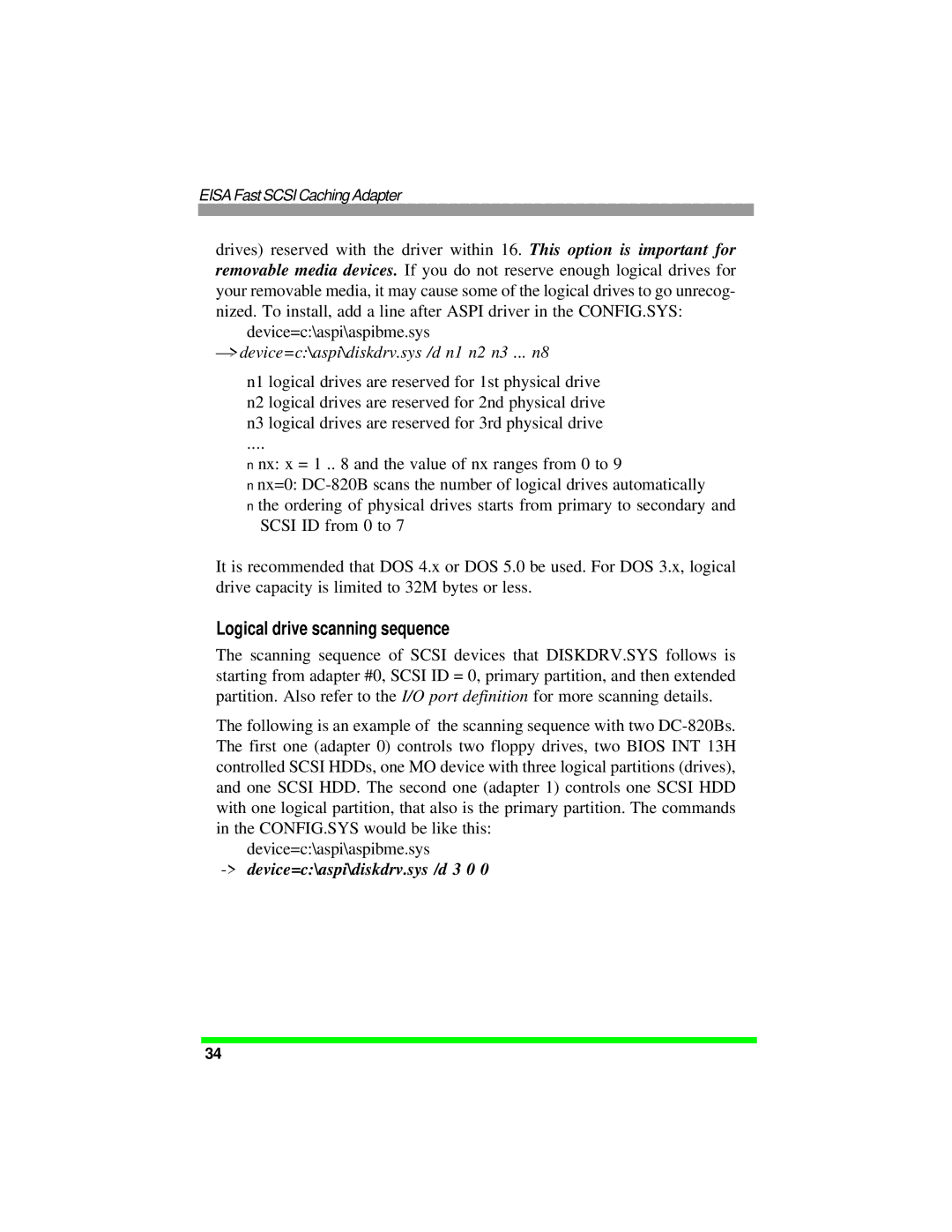
EISA Fast SCSI Caching Adapter
drives) reserved with the driver within 16. This option is important for removable media devices. If you do not reserve enough logical drives for your removable media, it may cause some of the logical drives to go unrecog- nized. To install, add a line after ASPI driver in the CONFIG.SYS:
device=c:\aspi\aspibme.sys
—> device=c:\aspi\diskdrv.sys /d n1 n2 n3 ... n8
n1 logical drives are reserved for 1st physical drive
n2 logical drives are reserved for 2nd physical drive
n3 logical drives are reserved for 3rd physical drive
....
n nx: x = 1 .. 8 and the value of nx ranges from 0 to 9
n nx=0:
n the ordering of physical drives starts from primary to secondary and SCSI ID from 0 to 7
It is recommended that DOS 4.x or DOS 5.0 be used. For DOS 3.x, logical drive capacity is limited to 32M bytes or less.
Logical drive scanning sequence
The scanning sequence of SCSI devices that DISKDRV.SYS follows is starting from adapter #0, SCSI ID = 0, primary partition, and then extended partition. Also refer to the I/O port definition for more scanning details.
The following is an example of the scanning sequence with two
device=c:\aspi\aspibme.sys
-> device=c:\aspi\diskdrv.sys /d 3 0 0
34
